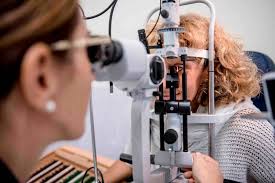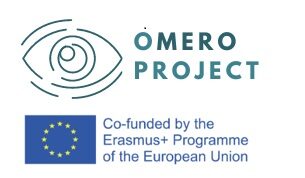The oMERO project aims at tackling a specific skill gap in the field of VDR – Visual Disabilities Rehabilitation.

Currently, the majority of rehabilitators working with visually impaired people are practitioners with a specific HE training (EQF6), such as OPTOMETRISTS or OPTICIANS, who are supposed to provide diagnosis, management and treatment services for disorders of the eyes and visual system; they counsel on eye care and prescribe optical aids or other therapies for visual disturbance. Sometimes PSYCHOLOGISTS or EDUCATORS, with a specific additional training, are involved in this kind of rehabilitation, aside to optometrist.
But any Professional Profile is formalized at EU level for Visual Disabilities Rehabilitators (VDR); ESCO classification doesn’t refer to them, but only to OPTOMETRISTS or OPHTHALMIC OPTICIANS (ISCO code 2267), although VDR could be properly classified under ISCO code 2269 “Health professionals not elsewhere classified” (like occurs for the “Occupational Therapist”). At national level, similarly this lack of formalization occurs in many EU countries: VDR are not formalized in national qualification registries and the rehabilitation is carried out by professionals who have not been trained in order to take into consideration a trans-disciplinary approach to it.
From the analysis of existing curricula at an international level, with the exception of the USA where there is a well-defined, complete and structured academic pathway for obtaining a National Certification in Rehabilitation Teaching for the Blind (NCRTB), and UK with its degree in Rehabilitation Work, it emerges that, worldwide, the professional training of new specialist skills in the area of visual rehabilitation is left to the sporadic, isolated and self-referential initiative of centers and associations without the intervention of definition processes and official certification of competences: usually needed skills are targeted by different specialization courses and not framed in an integrated trans-disciplinary curriculum; this fragmented approach affects the quality of the training and the recognition of a qualification.
The oMERO project aims to overcome the above described high-skills gap and to FORMALIZE A NEW CURRICULUM taking to a new specialist figure, the VDR, providing physical, mental and sensorial rehabilitation services, in a new trans-disciplinary, user-centred and ICT-based approach. Being anchored to the current needs of end-users and the wide society, the proposed CURRICULUM for VDR will BETTER MEET THE LEARNING NEEDS OF HE STUDENTS, while also being RELEVANT FOR THE LABOUR MARKET. The VDR could be employed both in public and in private sector, in residential, semi-residential or outpatient healthcare facilities; he/she should collaborate with the other members of the rehabilitation team and informal carers. The VDR is supposed to develop, implement and monitor the global rehabilitation intervention of the visually disabled user of any age, assuring the best level of quality of life and autonomy through empowerment, communication, learning, mobility and orientation, daily life skills.
The TRANS-DISCIPLINARY approach of the CURRICULUM will be assured by the integration of different topics, perspectives and tools and through INNOVATIVE PEDAGOGIES and WORK-BASED LEARNING. The curriculum will be “LEARNING OUTCOME-ORIENTED” and compliant with the main EU standard and tools for VET in HE, in order to support transparency and international mobility, as well as formal and informal competences recognition and validation. The CURRICULUM will be also based on a MODULAR and FLEXIBLE approach assuring its adaptability to any EU country; ONLINE and BLENDED learning will be supported by this flexible s approach, as well, and APPROPRIATE FORMS OF ASSESSMENT will be suggested for each learning outcome.
oMERO project will contribute both to the definition of the above described INNOVATIVE CURRICULUM and to is TRANSFERABILITY since it will deliver a number of TOOLS and GUIDES which will support HE staff (e.g. teachers, trainers, professors, tutors, mentors, administrative staff, etc.) in the ACTUAL USE of the CURRICULUM and its proper LOCALIZATION into the specific context, country and HEI. TOOLS and GUIDES will contribute to the PROFESSIONAL DEVELOPMENT of the STAFF of any HEI will choose to adopt and use the results of oMERO project.
During the project, a specific training will address HEI TEACHERS of 4 HEI partners who committed to implement the curriculum at the end of the project. They will be TRAINED IN NEW AND INNOVATIVE PEDAGOGIES and IN NEW CURRICULUM DESIGN, based on the tools developed in the project.
Representatives of the private and public labour market (Istituto David Chiossone, the applicant, and LAMUT) will be involved in the project as experts and future teachers of the HEI courses, thus PROMOTING LEARNING AND TEACHING PARTNERSHIPS WITH COMMERCIAL AND NON-COMMERCIAL ORGANISATIONS IN THE PRIVATE SECTOR.
